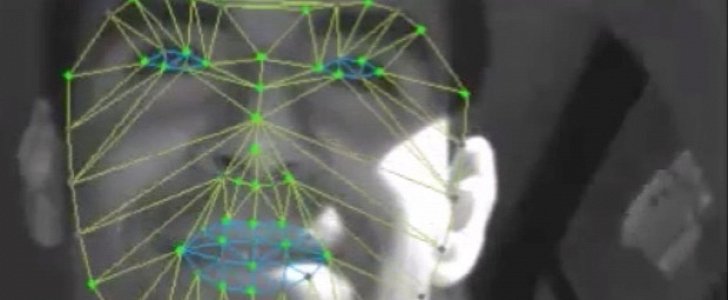Of all the brands pushing for autonomous technology (i.e. almost all of them), Tesla is by far the most aggressive. This has led to some raised concerns from certain parts of the press and the industry regarding the safety of these features.
For all intents and purposes, Tesla's Autopilot is nothing more than a driver-assist function meant to take some strain off the human behind the wheel during those tedious highway cruises. It's essentially a combination of an adaptive cruise control and a lane-keeping assistant that just happens to work very well for most of the time.
The name itself, though - Autopilot - has been criticized on the basis that most people associate it with a system that can take full control of a vehicle. Tesla's Autopilot can do that too, but - at least on a declarative level - it still requires the driver to maintain awareness and be ready to step in at any time.
But how can the vehicle know if the driver is following these instructions, or they're just catching up on lost sleep? By asking them to keep their hands on the steering wheel and alerting them whenever that input is not detected. However, Tarek el Dokor raises a very pertinent point in his piece on the IEEE Spectrum website: keeping your hands on the wheel does not equal paying attention to the road.
A driver can have their superior limbs resting on the wheel, but their mind could be wandering to all sorts of places. It's the same with their eyes: they could very well be watching an episode of their favorite series on the laptop with a hand on the steering wheel. Would that make them any more likely to react to a white trailer turning right in front of them?
The solution is having the driver's state of awareness monitored at all times, and that can be done in a number of ways. The one thing that all of them have in common is the use of an inward-facing video camera that tracks either the driver's eyes or his entire face. Other, more complex methods also include learning the driver's habits and confronting any abnormal behavior with the existing profile.
But even if the driver's cognitive load could be assessed, there is still one more issue left to resolve: transferring control from the vehicle's systems back to the driver whenever required. Whether we're talking about Level 2 automation (where we are now) or Level 3 (limited self-driving), the handing over would still have to occur, and this is why monitoring the driver's focus is so important.
Would this system make Level 3 autonomous cars almost unusable? Would it start beeping and disengaging the moment you took your eyes off the road? Would anyone even be interested in engaging it as long as it won't offer any actual relief? We can't say, but it's the only way for manufacturers to ensure they reduce the risk of crashes that could not have been avoided by a human driver as much as they possibly can. And, at the end of the day, that's the whole point of autonomous cars: to save lives.
The name itself, though - Autopilot - has been criticized on the basis that most people associate it with a system that can take full control of a vehicle. Tesla's Autopilot can do that too, but - at least on a declarative level - it still requires the driver to maintain awareness and be ready to step in at any time.
But how can the vehicle know if the driver is following these instructions, or they're just catching up on lost sleep? By asking them to keep their hands on the steering wheel and alerting them whenever that input is not detected. However, Tarek el Dokor raises a very pertinent point in his piece on the IEEE Spectrum website: keeping your hands on the wheel does not equal paying attention to the road.
A driver can have their superior limbs resting on the wheel, but their mind could be wandering to all sorts of places. It's the same with their eyes: they could very well be watching an episode of their favorite series on the laptop with a hand on the steering wheel. Would that make them any more likely to react to a white trailer turning right in front of them?
The solution is having the driver's state of awareness monitored at all times, and that can be done in a number of ways. The one thing that all of them have in common is the use of an inward-facing video camera that tracks either the driver's eyes or his entire face. Other, more complex methods also include learning the driver's habits and confronting any abnormal behavior with the existing profile.
But even if the driver's cognitive load could be assessed, there is still one more issue left to resolve: transferring control from the vehicle's systems back to the driver whenever required. Whether we're talking about Level 2 automation (where we are now) or Level 3 (limited self-driving), the handing over would still have to occur, and this is why monitoring the driver's focus is so important.
Would this system make Level 3 autonomous cars almost unusable? Would it start beeping and disengaging the moment you took your eyes off the road? Would anyone even be interested in engaging it as long as it won't offer any actual relief? We can't say, but it's the only way for manufacturers to ensure they reduce the risk of crashes that could not have been avoided by a human driver as much as they possibly can. And, at the end of the day, that's the whole point of autonomous cars: to save lives.

